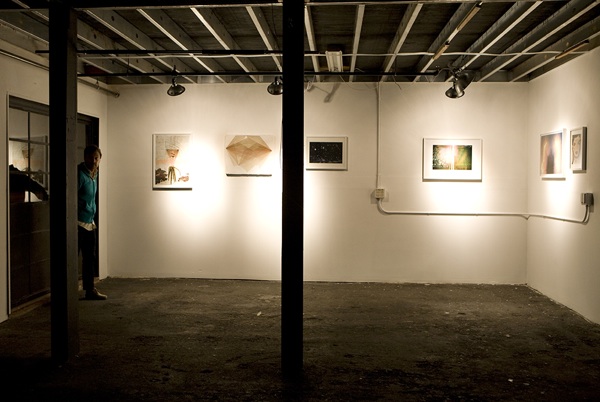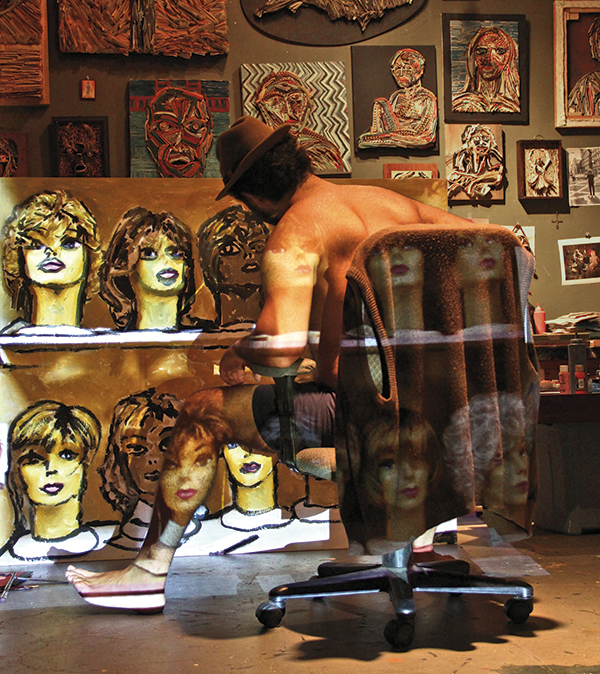interview: krysta + joel of TOPAZ
OK. This might just be me, but y’know those sort of projects—be they restaurants, artistic creations, street festivals, zombie poodles, what have you—that make you think, Wow, who the hell was cool (or crazy) enough not only to come up with this idea but actually pull it off? Now, I’m not claiming they’re up there with Calexico or equals to Christo and Jeanne-Claude (yet) or that they’re half as genius as whoever discovered that putting Mentos in Diet Coke makes the whole thing explode, but Krysta and Joel—the couple behind Topaz—are pretty damn awesome.

(Photo credit: http://www.topaz-tundra.com/sample-page/)
In case you haven’t stumbled across it yet, Topaz is the unassuming-yet-totally-rad arts venue situated on a bare stretch of St. Mary’s Road just east of the freeway. I covered one of Topaz’s shows a while back, and earlier that same day I was lucky enough to get to sit down with Krysta and Joel for an interview. I was curious to find out what inspired the creation of an arts venue as eclectic and unique as Topaz. How did it all come together? I ask them. Krysta and Joel exchange glances and then Krysta explains, almost sheepishly: “It happened by accident, pretty much.” So the story goes: Krysta was looking for a studio where she could work on her photography, and Joel needed space to store the vintage clothing he collects (and now sells—on Topaz’s second floor, known as Zia Vintage). “It was only once we’d found this particular spot that we realized, Hey, we could do shows here,” says Krysta. “It was very much the physical space itself that inspired us.” As Topaz illustrates in its very existence, a willingness to embrace instability, random strokes of insight, and fortuitous accidents can be a spectacular asset.
They were enthusiastic, but Krysta and Joel weren’t sure what sort of reception Topaz would get in the Tucson arts scene. Accordingly, they were thrilled when they found “a lot of respect, no drama, no pressure,” explains Joel. “If we’d done shows and no one’d come, we would’ve done something different. But there was support from the start,” and lots of people were eager to collaborate.
“We think of Topaz as a creative platform, so we love it when people approach us with ideas. We don’t have an overarching vision,” Krysta explains. “Or, rather, our vision is open-ended.” Topaz is primarily a music venue at the present moment (with 100% of profits going to the bands they host), but Krysta and Joel foresee an expansion into more polished art shows, poetry readings, literary events, and film screenings, among other projects.
So if you’re one of the many people in Tucson who would love to see the art scene of this city thrive, check out Topaz. It’s one of those crazy/cool ideas come to fruition that can inspire and enrich us all. And don’t forget to check the Zocalo Hannah blog for more Topaz updates—I’ll be keeping them on my radar, for sure!

 Nick Georgiou is a friendly, outgoing Tucson artist whose rapid-fire commentary on his art is punctuated with wide grins. He recycles old books and newspapers to create unique sculptural forms that have a surprisingly dark theme given the sunny nature of the artist.
Nick Georgiou is a friendly, outgoing Tucson artist whose rapid-fire commentary on his art is punctuated with wide grins. He recycles old books and newspapers to create unique sculptural forms that have a surprisingly dark theme given the sunny nature of the artist.



Also find us on...